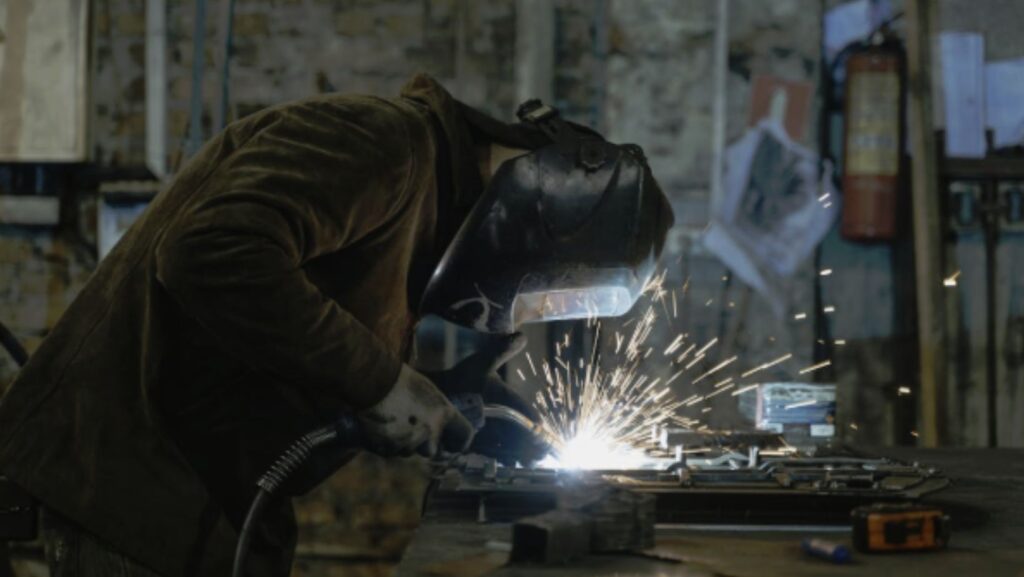
Welding is an increasingly in-demand skill that’s instrumental in a variety of industry contexts, from building bridges to fixing machines and beyond.
Right now, there’s a growing call for skilled welders in construction, manufacturing, and energy sectors. So, with job security growing as fast as infrastructure needs rise, learning to weld can be a smart move. Here’s an involved exploration of why this is the case and how to go about following this path.
The Rising Demand for Welders Across Key Industries
Welding is crucial to countless industries at the moment, and skilled welders are needed to meet the growing demands of various sectors.
Here’s why demand is so high:
- Construction projects are booming with urbanization increasing globally, with peak employment topping 8.3 million last year, representing a new record despite the ongoing shortage of talent
- Manufacturing is a $14 trillion market that depends on welders to create durable machinery and parts
- Renewable energy industries need welding for wind turbines, solar farms, and infrastructure updates, with green power sources set to account for 20% of all generative capacity by 2030
The BLS states that there are over 454,000 people employed for their welding skills in the US alone, yet the growth in job openings is not being met by newly trained professionals entering the field. This shortfall leaves companies searching for trained professionals who can step into these roles immediately.
Whether you’re repairing existing structures or building new ones, welding careers offer steady work with diverse opportunities across multiple fields. It’s a long-term opportunity where skilled hands make all the difference.
Why Trade Schools Are the Fast Track to Welding Careers
Getting into welding doesn’t require years of traditional college. Instead, attending a trade school for welding can quickly prepare you with the practical skills employers need.
Trade schools offer:
- Hands-on training using industry-standard equipment
- Certified instructors with real-world experience
- Focused programs that get you job-ready in months, not years
Unlike general education degrees, trade schools cut straight to what matters: learning and mastering techniques used on actual worksites. Many even partner with local businesses, connecting students directly to potential employers after graduation.
The investment is often significantly lower than at four-year colleges, as well. Students save time and money while gaining an in-demand skill set that opens doors immediately after completing their program. For anyone seeking high-demand careers without the burden of student debt, this path stands out as a practical solution.
Exploring Long-Term Job Security in Skilled Trades
Skilled trades like welding are careers with staying power. With industries heavily reliant on welders, the need for these professionals isn’t going anywhere.
Welding is a secure career because:
- Aging infrastructure requires constant repair and updates
- Renewable energy projects create ongoing opportunities, as mentioned, whether for large-scale projects or repairs for domestic solar panel setups
- Retiring workers leave a large skills gap that needs to be filled
Unlike fields where technology may replace roles, welding continues to thrive alongside technological advancements. Automation complements, but doesn’t replace skilled human hands needed for precision tasks and complex repairs. As industries continue to grow globally, the demand follows suit.
Additionally, welders can specialize further in high-demand niches such as underwater or aerospace welding, adding even more stability and earning potential to their careers over time. If long-term job security is the goal, few professions offer as solid a foundation as this one does.
Breaking Down the Myths About Welding as a Career
Welding careers are often misunderstood. Many assume it’s just hard labor with no room for growth, but that couldn’t be further from reality.
Here are some common myths debunked:
- Welding is only for men: Women have become an integral part of this workforce
- There’s no creativity involved: Precision welding often requires artistry and problem-solving
- It’s a low-paying job: Specialized welders can earn six figures in fields like aerospace or underwater welding
Welders also have opportunities to travel as much as those who want to become digital nomads, work on major infrastructure projects, and even contribute to cutting-edge industries like robotics and renewable energy. It’s far from monotonous; every project presents unique challenges that require skill and innovation.
With the demand rising across various industries, choosing welding opens doors to diverse, rewarding career paths that shatter outdated stereotypes.
How Modern Technology is Shaping the Future of Welding
Welding is no longer just about traditional tools. Advances in technology are transforming how welders work, making the trade more efficient and precise than ever before.
Technological innovations in welding include:
- Robotic welding systems for repetitive tasks that improve productivity
- Augmented reality training tools are helping students learn faster with interactive simulations
- Advanced materials require specialized techniques for industries like aerospace or medical manufacturing
These advancements enhance the abilities of skilled workers, opening up opportunities to work with cutting-edge equipment and processes. Welders today must stay updated on emerging technologies, which adds a level of technical expertise that keeps their skills relevant and competitive.
They may also have the opportunity to expand their roles further by acquiring leadership skills and taking management positions within the industry spheres they occupy.
The Bottom Line
Put simply, welding is a stable, high-demand career that has a direct impact on vital industries. So, calling it a job is doing it a disservice.
From trade schools providing hands-on training to long-term security through specialization, this path is practical and rewarding for anyone seeking reliable work.
With evolving technology shaping the field, welding combines traditional skills with innovation. Whether building bridges or advancing energy solutions, welders remain indispensable in driving progress forward while securing their future in the workforce.








